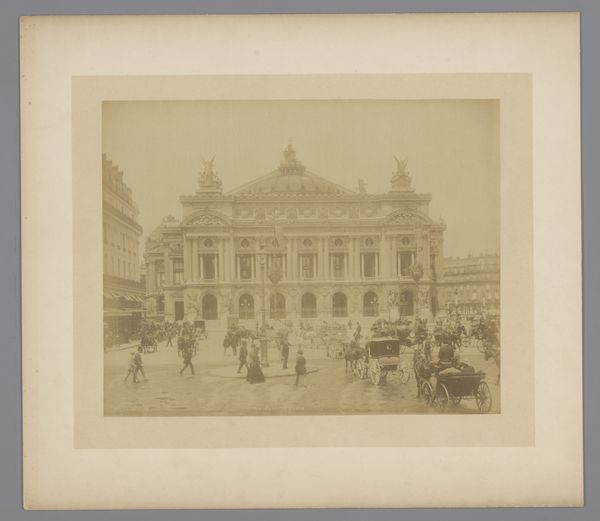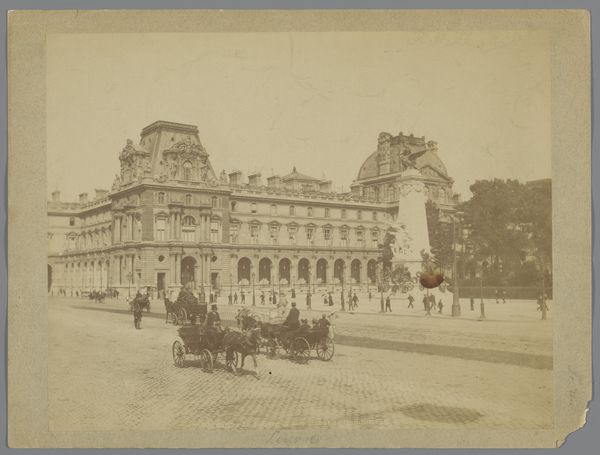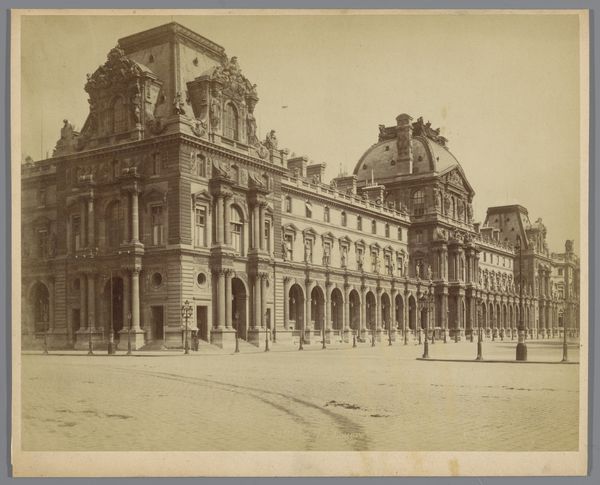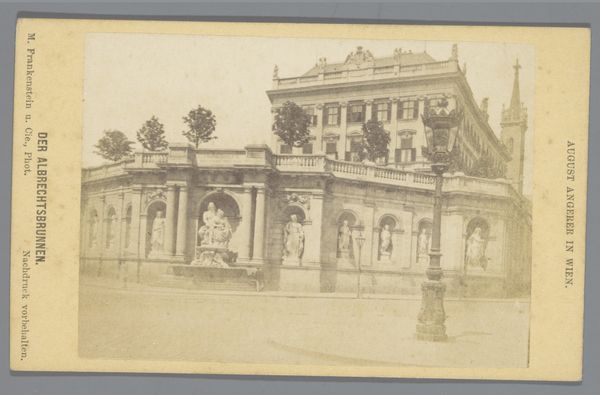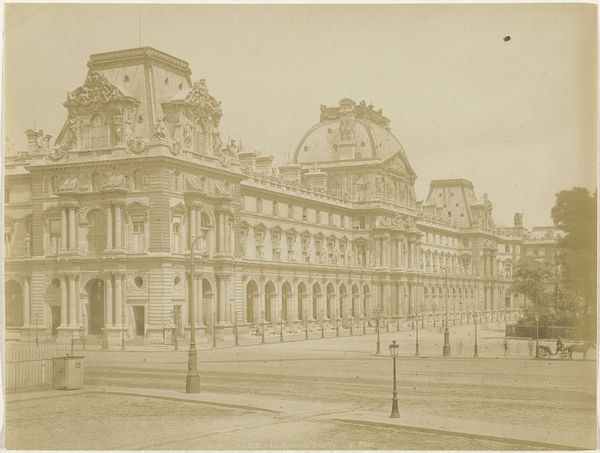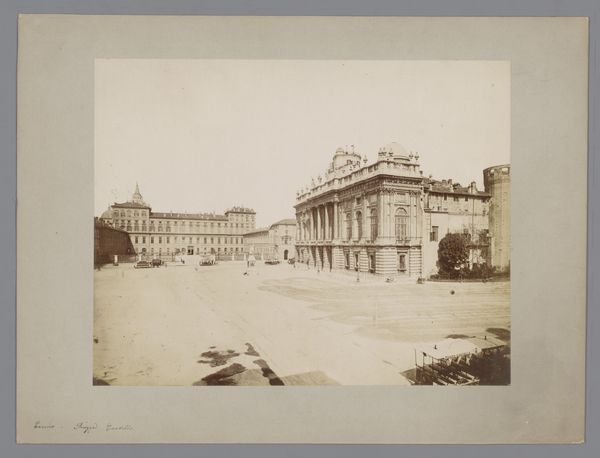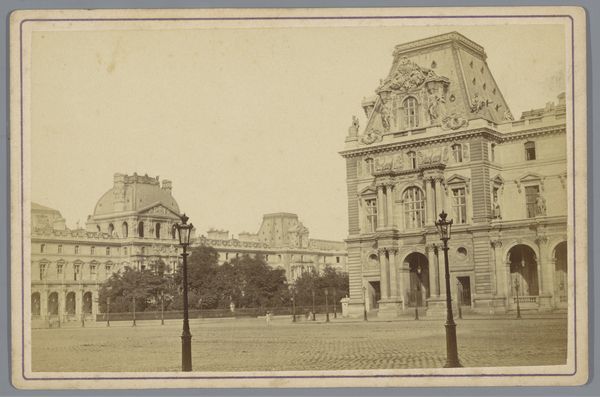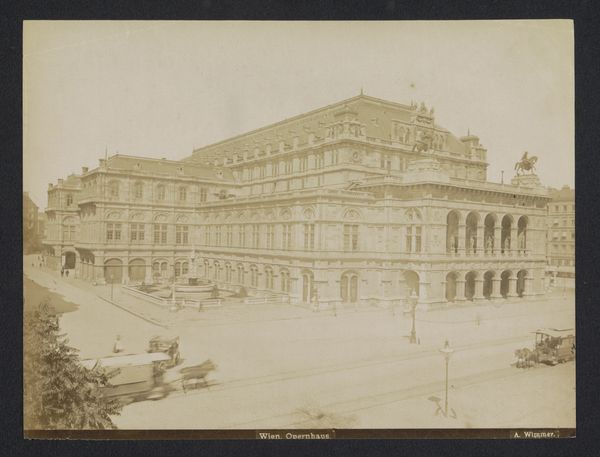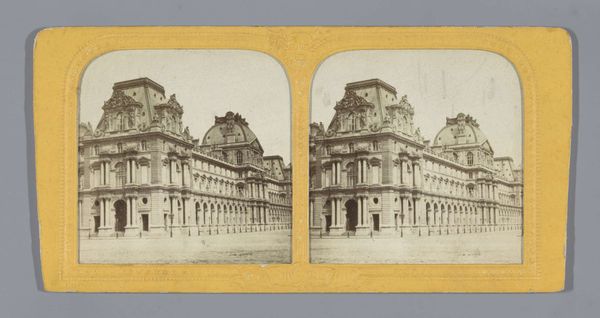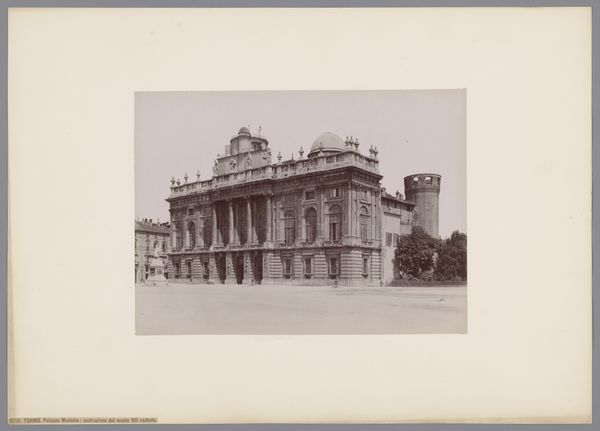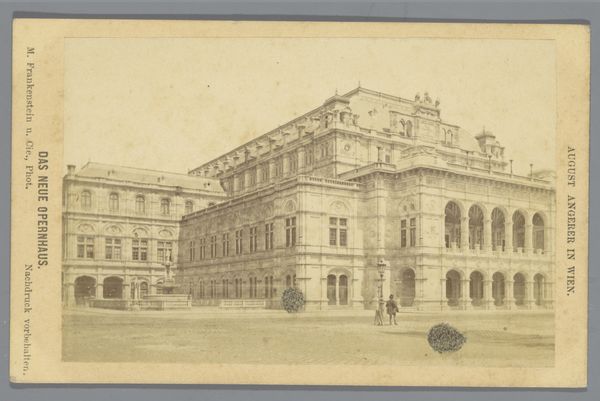
Dimensions: height 222 mm, width 279 mm, height 304 mm, width 401 mm
Copyright: Rijks Museum: Open Domain
Editor: This photograph, "Nouveau Louvre, Parijs," captured by J. Kuhn between 1870 and 1900, showcases the Louvre’s grand facade. There's a nostalgic feeling, maybe because of the sepia tones and aged paper. It makes you think about Paris’s past. What stories do you see unfolding in this image? Curator: I see a deliberate staging of power and continuity. Look at the framing; it's not just a building, it is a monument to enduring values. The soft focus and sepia tone imbue the scene with a sense of timelessness. What does this choice of aesthetic communicate, do you think? Editor: It feels like a memory... an idealized past. Is that neoclassicism showing its influence? Curator: Precisely! Neoclassicism, with its revival of classical forms, represented order and stability, which was crucial for France during this period. This photograph participates in shaping that image of Paris, and even France itself. But what's more, look at the street activity captured within. How does this "snapshot" fit into the visual narrative? Editor: It grounds it, somehow. People going about their lives juxtaposed against this imposing structure... showing daily life existing under the umbrella of this grand cultural institution. Curator: Exactly. Photography itself, still relatively new at the time, plays a part in solidifying the Louvre's presence in the collective imagination, blurring lines between reality and the constructed image of Paris. Does observing the muted palette add or change to your interpretation? Editor: I hadn’t considered the colors explicitly. It emphasizes a sense of heritage, I guess, because a brighter photograph could come across completely differently, more like modern propaganda, or a postcard, rather than fine art! This feels considered and historical. Curator: It's all quite intentional. Analyzing images this way teaches us how deeply interwoven symbols and cultural meanings can be. Editor: I'll definitely look more closely at those visual layers now.
Comments
No comments
Be the first to comment and join the conversation on the ultimate creative platform.
